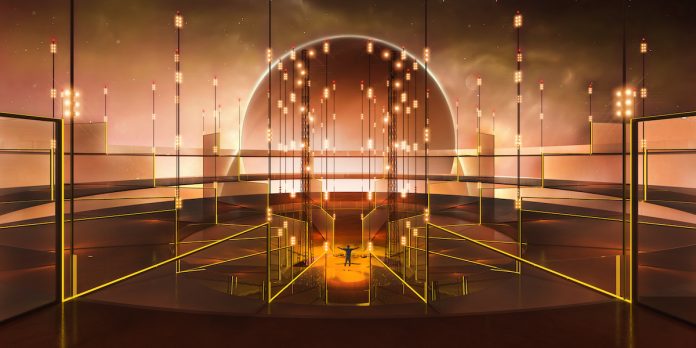How we will live, dwell, travel and work in the near post-pandemic future? Will it be possible, one day, to have fun again at the disco, or to attend a concert, or will crowds become a thing of the past? How will we pray, how will be dine in restaurants? Will normality ever return? Hot topics, approached by Downtown Design, the event from 9 to 14 November in Dubai and online, to explore how we will live, dwell, work, have fun and travel in the future, thanks to the exhibition “The Shape of Things to Come” organized in Building 4 of the Dubai Design District (d3).
Twenty-two projects by the most important studios of design and architecture, such as Gensler, which presents Living Volume, interchangeable prefab components to create sustainable volumes, constructing places in which to live, work and play while allowing our planet to prosper, solutions where acoustics, lighting and biophilia, comfort and flexibility are designed to expand or contract based on changing needs. From residential offerings to eco-tourism to organic projects, adaptability is the key to the future.
The projects on view try to respond to the various new requirements generated by the pandemic, from the possibility of circulating in the street without coming into contact with others, as in the Vow modular pedestrian system proposed by Sibyl, to the freedom to dine out in a restaurant without fear, with the Jellybean protection by Studio Toggle, where each table is wrapped in an inflatable pod formed by an ecological bio-resin, to create contact-free space. All the way to the Island Work Safe system by XO Atelier, an ‘island’ for work at a distance, a domestic comfort zone, or a nest in coworking, hotel and airport spaces, super-outfitted with sockets and ports, recharge station for computers and phones, built-in speakers and connections, to have a private work corner wherever you go. Or Evolve, by Rabih Geha Architects, a nightclub for the Covid era, a layered concentric layout focusing on three factors: space, people and entertainment, where crowds can celebrate together while keeping their distance, and where the limitation of physical freedom is balanced by the expansion of sensorial experience, leaving room for a new definition of normality.
Downtown Design confirms its place as the most important appointment for creativity in the Middle East: besides the exhibition and the installations, it is also a digital fair, an online showcase to discover the latest trends and collections, creating connections between producers, designers and buyers, and providing Virtual Talks with the participation of architects like Aline Asmar D’Amman, interior and product designers like Pallavi Dean, and sector journalists like Max Fraser.
























